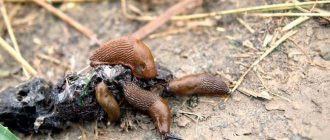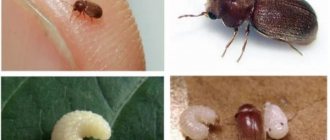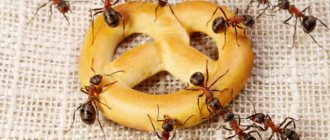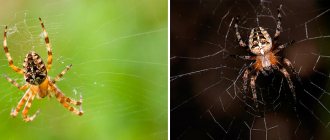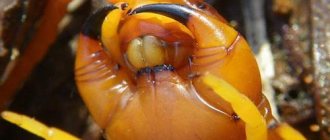Home / Pests and diseases
Back
Published: 07/23/2019
Reading time: 12 min
0
Mole cricket (cabbage weed, crayfish, crayfish) belongs to the group of dangerous pests of agricultural crops. A voracious and prolific insect causes serious damage to plantings, damaging roots, root crops, and young plant shoots.
Despite the huge number of means, methods of destroying and repelling the pest, it is not always possible to achieve the desired result. Therefore, gardeners are always looking for: how to deal with mole crickets, what technology is effective, and at the same time as safe as possible for humans.
- 1 Features of pest control
- 2 Use of folk remedies
- 3 Setting up traps
- 4 Lures
- 5 Plants are protectors
- 6 Natural enemies of cabbage grass
- 7 Biological drugs: is it worth using?
- 8 Repelling mole crickets
- 9 Features of the use of insecticides 9.1 Protection of seedlings
- 9.2 Expanding the range of drugs
Features of pest control
The mole cricket on the site lives in the soil, arranging numerous burrows, nesting places, and storerooms underground. It rarely appears on the surface, quickly runs away from danger, flies, swims quickly, which seriously complicates the fight (see photo of the mole cricket).
It prefers garden plots with manured, moist soil, vigilantly standing guard over its possessions, protecting nests with clutches of eggs and larvae.
To destroy the pest in a summer cottage, various methods and technologies are used. A number of means are used to repel cabbage grass, others are used to exterminate and reduce the population. In the list of funds:
- traps;
- bait;
- electronic and homemade repellers;
- insecticides;
- biological drugs;
- compositions according to folk recipes;
- mechanical methods.
There is no single effective method of control; it is advisable to take an integrated approach using various means. The use of folk recipes gives results as a preventive measure, as well as with a small number of insects on the site. If there is a massive pest invasion, then “chemistry” has to be used. It is difficult to get rid of mole crickets in the garden forever, but for some period of time it is quite achievable.
On a note! To destroy the mole cricket, you need to involve your neighbors in the country. Only through joint efforts will it be possible to cope with a serious “enemy”.
How to get rid of mole crickets on your property: the most effective ways
Folk methods and remedies will help you cope with pests in your summer cottage. They are effective, affordable and safe.
The following methods will help you remove pests from your dacha:
- digging up the area - this destroys the nests and disrupts the vital activity of parasites;
- creation of artificial barriers;
- exposure to substances with a pungent odor;
- etching, flooding.
Barriers for insects
A simple but effective way to protect young plants from mole crickets is to create barriers. To do this, cut old plastic bottles into rings and place them around the plant. They should cover the roots and rise 5 cm above the ground. This primitive method will protect the root system and shoots.
Nylon stockings can save a young plant . They will reliably protect the root system of the plant without disturbing the process of its development. Place an old nylon stocking over the root before planting to protect it from mole crickets and other pests.
Homemade trap
Effective home remedies in the fight against earthen cancer are traps - yeast/beer, water, shadow or manure. They differ in the way they are organized, but they are all based on the preferences and activities of pests.
According to reviews from experienced summer residents, traps have a very effective effect, so let’s take a closer look at each of the options.
Traps are an effective way to control cabbage weed. The bait will lure the pests out of their holes, after which they will fall into a trap from which they will not be able to escape.
Shadow
During the day, mole crickets prefer to hide in secluded corners, under leaves or stones. To attract them, place scraps of dark fabric on the site in sunny places. Raise the shade traps daily and destroy any pests found.
Yeast/beer
Bears love beer. Dig several bottles or narrow jars with the remains of the intoxicating drink into the ground. Leave the necks open. Pests will crawl into containers, attracted by the smell of the bait, and will not be able to get out.
We offer a video, after watching which you will be convinced of the effectiveness of a similar trap:
Water/sweet
A water trap has the same operating principle, but instead of beer, use clean water, and to attract insects, lubricate the neck of a bottle or jar with honey.
Manure/compost
manure is effective .
The procedure for using it is quite simple:
- In the fall, dig several holes in the garden, up to half a meter deep.
- Fill the holes with manure mixed with hay.
- The mole crickets will crawl to the hot spots to set up a home for the winter.
- After the first frost, dig out traps and scatter manure with insects over the surface of the ground.
- Frosts will destroy pests.
how an experienced gardener catches pests from a compost pit in the following video:
Other ways to kill and scare away mole crickets
Having identified traces of pests in the area, try to lure the mole cricket outside . This can be done using a kerosene-based solution:
- Dilute 100 g of kerosene in a bucket of water.
- Pour the resulting solution into the mole crickets' passages at intervals of a couple of hours.
- Destroy the emerging insect.
The disadvantage of this method is the inability to detect all underground passages of pests, so it does not guarantee one hundred percent elimination of them.
Another way to expel a mole cricket from a hole:
- Grate 50 g of laundry soap or take 20 g of washing powder.
- Prepare a soap solution in 10 liters of water.
- Pour the resulting product into the pests' passages, wait until they crawl out and kill them.
A soap solution based on laundry soap or washing powder will help lure out the pest. Just pour liquid into the insects' passages, and in a couple of minutes they will crawl out of their holes
You can lure the mole cricket with sunflower oil :
- Pour 1 teaspoon of oil into the mink.
- Pour a large amount of water into the passages - 1 bucket.
- The oil will moisten the hairs that cover the insect's body and block the pest's respiratory tract.
- This condition will cause discomfort and the insect will crawl out, where it should be waited and destroyed.
Crushed eggshells . Combine the resulting powder with sunflower oil in equal proportions and distribute evenly over the area during digging (in autumn or spring). You can also pour eggshells into the holes when planting seedlings or potatoes.
As a poisonous bait, also use steamed oats, wheat or corn, sprinkled with Aldrin (50 g of powder per 1 kg of grain).
To get rid of mole crickets in the garden forever (or at least for a long time), use an integrated approach - baits, traps and other folk remedies
Ultrasonic repellers
Modern developments - ultrasonic repellers - will help drive pests away from the site. The devices emit signals that negatively affect the condition of insects and even some animals. With this impact, the mole cricket experiences discomfort, forcing it to leave the area.
To repel pests, devices such as “Riddex”, “Grad”, “Post Reject”, “Typhoon”, etc. are used. Before purchasing, consult with a specialist to choose a device that will not harm pets.
The use of folk remedies
Gardeners have accumulated a wealth of experience in various means of exterminating and repelling cabbage grass. Some of them are unusual, others are traditional, known to summer residents of various regions.
They save themselves from the voracious earth mole with the help of birch tar and ammonia, onion peels and crushed eggshells. As assistants for summer residents:
- garlic;
- coniferous branches;
- kerosene;
- matches;
- chicken droppings;
- laundry and tar soap, shampoo;
- naphthalene;
- iodine;
- turpentine.
When using the products, we must remember that thoughtlessly watering the beds with kerosene or laying out large quantities of naphthalene will lead to contamination of the area and deterioration of the quality of the soil.
The effectiveness of each method is tested in practice, and in any case it is necessary to approach folk recipes and recommendations wisely and without excessive fanaticism.
Setting up traps
To exterminate insects, traps are built in gardens and garden plots, luring mole crickets with honey, beer, and fermented jam. The basis of the traps are containers (plastic bottles, glass or tin cans) buried in depressions in the soil. A little beer or other bait is poured into them and covered with a board or piece of tarpaulin on top.
Holes are dug in places where the pest is expected to live, and traps are checked every 10-15 days.
Lures
In a summer cottage, it is easy to make baits to kill crayfish using different grains. Poison (boric acid, insecticides) is added to cereals as active ingredients.
Several recipes:
- steamed grain (corn, wheat) + Metaphos;
- steamed peas (1-1.5 kg) + Regent preparation (ampoule);
- 0.5-1 kg of porridge (buckwheat, pearl barley, oatmeal) + Parachute (ampoule);
- crumb of black bread + sulfur of matches.
Baits are scattered between rows in beds, under plants, and placed in pest holes.
On a note! To attract mole crickets for scent, add a couple of tablespoons of unrefined vegetable oil to porridge or steamed grain.
Such baits must be used carefully, keeping domestic animals, chickens, geese, and ducks away from the area.
Medicines for mole cricket
On various sites you can find a recommendation to start the fight with folk remedies and only then switch to chemicals. In fact, the choice of control method depends on the number of insects in the garden: if there are a lot of them, no traps or infusions will help. The drugs listed below, on the contrary, will give the desired effect, and almost immediately.
Parachute
A synthetic drug produced on the basis of phosphorus. It works exclusively against mole crickets, for the destruction of which it is used as part of poisonous baits.
Properties of the drug:
- valid for 14 days;
- safe for soil structure;
- harmless to humans and animals.
There is no evidence that the drug disrupts the biological balance in the soil. It is believed that it does not affect the growth and development of agricultural crops in any way and can be used everywhere.
Rembek
Rembek is a dual-action insecticide: it repels mole crickets with a pungent odor and destroys individuals when it enters their digestive organs. According to the instructions for use, one package is enough to treat an area of 15 acres.
The granules have a complex composition:
- pressed cereal as a base;
- boric acid - active ingredient;
- kerosene;
- sugar;
- chemical flavors.
The application is simple: find the mole cricket's passages or nests, use a teaspoon to pour the poison into it. Some insects will be frightened by the smell and leave, while others will die when eaten.
Chops
A chemically effective drug whose main active ingredient is fipronil. In mole crickets and some other insects, it interrupts the innervation, which leads to paralysis and death within 3 hours after eating.
In addition to the active ingredient itself, the drug contains vegetable oils and flavoring additives. The granules are colored brown and green to imitate seeds and plant shoots.
The drug is effective for 14 days, then under the influence of moisture and temperature fluctuations it is destroyed and loses its properties.
Antibug
The product is widely used to combat the Colorado potato beetle on potatoes, but can also be used against the mole cricket. It acts not only when it enters the intestinal tract, but also when the insect comes into contact with the granules.
Antibug has the following properties:
- acts within a minute after treatment;
- destructive to adult insects and larvae;
- retains active properties for a long time;
- protects tuber crops from damage by mole crickets;
- does not affect plant development.
It is a preparation for dissolution in water. For 10 liters of water you need 1 g of powder. The specified volume is enough to process 10 acres of vegetable garden. It is preferable to process potatoes and other crops according to the instructions.
Regent
The drug with fipronil is available in the form of ampoules for preparing a solution. The plant is sprayed with the product, and the mole cricket dies from paralysis when it eats its underground part.
In addition to the mole cricket, Regen also acts on other insect pests. If the instructions for use are followed, it is moderately hazardous to humans and animals. Instead of spraying, you can moisten grain or cereals with the solution - the effect will be the same, and safety for humans will increase.
Grizzly
The drug is of synthetic origin, it is a bait impregnated with a toxic substance - diazinon. It is produced in the form of large brown granules, which before use must be crushed and placed in pest burrows or in dug holes up to 5 cm deep.
After interacting with the product, the mole cricket lives for another 2 days, then dies. At the same time, other pests harmful to the gardener also die. It is better to carry out processing in calm weather so that the smallest particles do not fall on the plants.
Medvetox
A narrow-acting drug designed specifically to combat mole crickets. Retains active properties for 45 days, which is important for treating large areas.
At its core, it is a poisoned bait. It is laid in shallow holes in the early morning or evening, then sprinkled with earth and watered with water. It is advisable to treat large areas before rain. When interacting with water, the drug begins to emit an odor that attracts insects; when eaten, they die.
Plants are protectors
It has been noticed that some strong-smelling herbs and flowers repel cabbageweed. The insect has a well-developed sense of smell; foreign specific odors depress and disturb the pest. This is used by summer residents who plant marigolds and chrysanthemums around the perimeter of the beds.
The mole cricket cannot stand the smell of aspen, but in this case they do without planting trees. Prepare aspen branches or pegs and stick them into different places in the garden. It has been tested that the pest soon leaves uncomfortable places, preferring to breed in favorable conditions.
How to deal with cabbage weed in spring and summer
- In the spring, as soon as the ground thaws, pests crawl out of their shelters in search of food. They appear even before the mass growing season of grasses, so deep digging of the garden in early spring with a pitchfork is effective. Some of the disturbed burrows will freeze during spring frosts.
- Before planting the main crops, you can water the soil (beds, paths) with diluted bird droppings. You cannot water the seedlings with this solution, but you can do it 1-2 weeks before planting the seedlings - cabbage grass does not like the smell of bird droppings. This measure is temporary, does not last long, but will temporarily scare it away from the seedlings.
- When planting seedlings, we use collective intelligence and ingenuity. We bury everything that can scare away.
Folk methods of fighting mole crickets
- When planting in a hole, putting a spoonful of crushed eggshells with a spoonful of fragrant (unrefined) vegetable oil helps a little.
- Burying smoked fish between the holes with seedlings - the smallest and driest, thoroughly smoked - is believed that the mole cricket does not tolerate the smell of smoked meats. In fact, most likely, this smell simply disorients it and covers up the smell of the young root growth of seedlings. It makes sense to bury pieces of small fish (sprat, herring) next to the hole or throw them directly into the hole. The fish goes rotten quite quickly, and periodically you need to add fresh batches to the beds, dropping them to a depth of 10 cm. This is an unpleasant measure, but oddly enough it works.
- Alder and aspen branches help scare off mole crickets - their smell is also unpleasant for the pest. Use branches with bark - it releases the most essential substances. You need to stick it in at least a meter along the beds with seedlings and replace thin branches with fresh ones weekly.
- Beer traps: this drink attracts mole crickets. You need to use bottles with a fairly wide neck, milk bottles will do. Dig them in between the rows obliquely, at an angle of 45 degrees, pour beer on the bottom (no more than 1/3 of the bottle). The main thing is that the neck is level with the ground or slightly lower. Any pests found should be fished out of the beer and destroyed. Change beer at least once a week. Such traps really work.
- The smell of onions scares the mole cricket a little; you need about half a bucket of onion peels per 10 liters of water - this is a lot, in fact, you need to collect the peels all year round. Pour boiling water over it and leave for 24 hours, although you can cook it on a garden stove for about 20 minutes. Then strain and dilute the resulting solution with water in a ratio of 1:4 or 1:5. Water the developed seedlings with the solution, but not on dry soil, but after the main watering or rain. The method actually helps little, it is suggested out of hopelessness.
- The cabbage plant also doesn’t like the smell of marigolds; these flowers have a lot of advantages: the roots repel the mole cricket, the flowers attract pollinators, the smell of the leaves repel aphids and the Clodorado beetle. However, the method is not reliable; there is a slight reduction in pests, but it does not help to get rid of them completely.
Natural enemies of cabbage grass
Birds are not averse to feasting on insects: rooks, starlings, crows. In the southern regions, storks actively exterminate cabbageweed; the main thing is to attract the insect’s natural enemies to the site.
To do this, they build birdhouses, feed the birds, and do not destroy the nests.
Hedgehogs will help reduce the population of earthen crayfish. For these useful animals, secluded places are arranged in areas (in lowlands, near rotten trees, near hedges). Another group of helpers are ground beetles, lizards, shrews, and centipedes.
A species of burrowing wasp, Larra anathema, poses a serious danger to cabbageweed. The solitary black wasp is known for its care of offspring and its original way of laying eggs. She chooses a mole cricket for the nest, looking for insects in the underground labyrinths of burrows. Drives the pest to the surface, stings, causing temporary paralysis and during this time manages to lay one egg under the insect’s foot.
After some time, the mole cricket comes to life, crawls into its hole, and the sand wasp larva successfully develops, parasitizing on the body of the insect. Shortly before the wasp pupates (approximately 15-30 days after laying), the mole cricket dies. This is how the Larra wasp helps a person fight a dangerous pest.
Ways to fight
Prevention against mole crickets is the most reliable way to combat it.
In order to prevent the appearance of mole crickets in the garden, it is worth taking effective measures:
- Plant marigolds in your garden. These harmless and beautiful flowers help prevent not only the appearance of mole crickets, but also other pests. Even if a mole cricket has already appeared in the garden, newly planted plants will also help drive away uninvited guests.
Another way to prevent mole crickets is onion peeling. Make an infusion of 1 kg of husk and a bucket of water. Leave it for a week.
After the product is ready, dilute it in a ratio of 1 to 5 and water the garden with it after rain at intervals of a week. After several waterings, the mole cricket will disappear from the site.
Mole crickets simply cannot stand the smell of chicken droppings. You can have chickens on your property or simply water your garden with a solution of feces.
If you know exactly where the mole cricket’s nest is located, you can destroy it; this will not get rid of the insect completely, but at least part of the egg clutch will be destroyed and the number of offspring will decrease.
Kerosene helps to fight mole crickets very well. Pour 1-2 tablespoons of kerosene into a bucket of sand and scatter it around the perimeter of the area.
Cool boiling water also works very well against egg laying. Pour the mink mercilessly so that it is thoroughly boiled, and then trample it on top.
Read about various folk methods of fighting mole crickets here.
Biological drugs: is it worth using?
Nowadays, biological products that are considered environmentally friendly are actively used in pest control. Another “advantage” of such products is the lack of resistance in insects, which is often noted with traditional insecticides.
Operating principle: colonization of the pest’s body by fungi or predatory insects that parasitize at the expense of the host (mole cricket, wireworm).
The following remedies will help you get rid of mole crickets:
- Nemabact is a symbiosis of bacteria and a certain subspecies of nematode. The predator is distinguished by its reproduction speed, when used it gives an effect of up to 70-80%;
- Antonem-F is a drug similar to Nemabact, differing only in the type of nematode;
- Boverine is a drug based on the spores of a fungus of the Deuteromycetes species, which causes the disease muscardinosis. The peculiarity of the action is germination in the body of the mole cricket, poisoning of larvae and adults, infection of insects in the entire population.
But the use of biological agents is associated with difficulties:
- effective only at certain soil moisture and temperature levels;
- The preparation of biological products requires strict adherence to the recipe and deadlines.
How to get rid of mole crickets in the garden using chemicals
Are you interested in how to get rid of mole crickets on your property? The most effective way is pesticides. This is a radical method of struggle, which summer residents turn to when folk remedies are ineffective.
To combat the mole cricket, the following pesticides are used: “Aktara 25 WG”, “Prestige”, “Medvetoks”, “Grom” and “Phenoksin plus”. These products are available in the form of powder, granules or liquid. To destroy pests, also use biologically active substances - “Boverin”, “Nemabakt”, etc.
Pesticides have a toxic effect on the body of insects, which leads to their inevitable death
Procedure for using chemicals:
- Read the instructions on the package carefully.
- Determine the location of the pest's last activity (the most recent passages).
- Place poison pellets in the holes. When laying out the poison, cover it well with soil to limit access to it by pets or birds.
- To increase the likelihood of attracting mole crickets to the poison, make baits from fresh manure.
When working with pesticides, do not neglect safety measures. Be sure to wear rubber gloves and avoid inhaling chemicals or getting them on your skin or mucous membranes. Do not allow children or pets to come into contact with the poison.
Repelling mole crickets
Simple but effective repelling methods include the installation of special devices (turntables, electronic devices).
On a note! Widely advertised ultrasonic devices are not suitable for repelling mole crickets and moles. Digging species of animals and insects do not perceive ultrasound, so repellers with infosound (oscillations at low frequencies) are used for them.
There are various models of devices on sale that operate at radii from 400 to 1500 meters.
Craftsmen make turntables with blades in their summer cottages using ordinary plastic bottles. Placed on stakes, such weather vanes rotate in the wind, creating vibration in the surface layers of the soil. This scares away the cabbage grass, and the pest leaves the area.
Description and photo of the bear
This animal, hated by any gardener, belongs to the family of insects of the order Orthoptera - the closest relative of the locust, behaves the same way - they are found everywhere where you want to grow something from vegetables, berries, flowers.
Mole crickets have an oblong dark brown body 5-8 cm long and about 1-1.5 cm wide: a small cephalothorax and a significant fusiform abdomen with thread-like appendages at the end (cerci).
The body is covered with a protective shell, under which the mole cricket hides its head in case of threat. She has clearly visible faceted (like a fly) eyes, long whiskers and two pairs of tentacles. The mouthparts are gnawing type.
This is what a bear looks like
The forelimbs are designed for tearing and raking the earth. Adult pests have developed scaly wings and are able to fly several meters.
The mole cricket digs tunnels in the surface layers of the earth, and along the way gnaws off all the succulent rhizomes, root crops, and young roots, which is why it is sometimes called the earth locust. It is especially harmful to seedlings in the spring - it destroys tomatoes, peppers, cucumbers, potatoes, and gnaws the roots of fruit seedlings.
Very often you can come across mole cricket passages - holes in the ground with a diameter of 3-4 cm. At a depth of about 15 cm you can find an oviposition - a small chamber the size of a fist. Lays 100-300 eggs in spring.
The mole cricket is very thermophilic, so it lays eggs only in those areas that are well warmed by the sun. By winter, it goes deeper, breaking the network of vertical passages - it does not tolerate frost, below zero it already goes into hibernation.
During the winter, despite the high fertility of mole crickets, not all of them survive, only those who managed to find non-freezing places - beds with good shelter or manure heaps.
Cucumbers died from mole cricket - sudden wilting
Taking into account this way of life of the pest, it is possible to conduct targeted control. By the way, in some regions, in particular in the Kuban, the mole cricket is called the cabbage mole cricket - it destroys cabbage in one or two.
Features of the use of insecticides
In case of mass pest invasions, there is no other way but to use “chemistry”. Not every summer resident agrees to use insecticides, but faced with the threat of crop loss, one has to make a choice.
The list of chemicals includes both universal remedies for garden pests and specialized ones (only for mole crickets). Approved medications are used, strictly observing processing times, dosages, and protective measures during work.
It is necessary to follow the instructions regarding the time intervals between the procedure and harvesting (waiting periods), take into account the hazard class of the insecticide (for humans, for bees, for inhabitants of water bodies). The permitted frequency of treatments is also indicated in the instructions.
Among the popular remedies among summer residents, we note:
- chops;
- Thunder;
- Parachute;
- Frontier;
- Grizzly;
- Wofatox.
The use of these chemical insecticides is described in detail in articles on our website.
Other modern insecticides (concentrates, granules, powders) are also used in the fight against mole crickets (see table).
| Name of insecticide | Number of treatments | Active substance | Hazard Class | Waiting period |
| Terradox | 2 | Diazinon | III | 60 days |
| Bankol | 2 | Bensultap (nicotinoid) | III | _ |
| Phenaxin Plus | 2 | Malathion | III | 20 days |
| Medvetox | 2 | Diazinon | III | 60 days |
| Tzipi | 2 | Cypermethrin | II | 7 days |
| Rembek | 2 | Boric acid | _ | _ |
| Anti Medvedka | 1 | Imidacloprid | III | _ |
In addition to treating plantings, insecticides are added to baits as poisons.
Seedling protection
In farms where crops are grown over large areas, seedling treatment technology is used to protect against mole crickets. The most commonly used solution is the insecticide Aktara, known to gardeners as a remedy against the Colorado potato beetle on potatoes, tomatoes, aphids, and thrips.
On a note! The manufacturer of Aktara is Singenta. It is advisable to purchase the insecticide in the manufacturer's original packaging.
For treatment, prepare an aqueous solution (take 15 grams of Aktara per 10 liters of water), soak the roots of the seedlings for 1-1.5 hours, then plant them in a permanent place in greenhouses or on ridges without washing. From experience, the mole cricket is careful not to attack such plants, so the seedlings adapt well and grow quickly.
We are expanding the range of drugs
In addition to traditional insecticides designed to combat mole crickets, gardeners have recently been using other preparations. This is due to the fact that insects become accustomed to certain types of chemicals, which reduces their effectiveness.
For baits (adding steamed grain or peas to porridge), use Regent 800 in granules, as well as liquid concentrate Regent 25. These fipronil-based products have gained popularity in the fight against the Colorado potato beetle, but summer residents also successfully use them to protect plantings from cabbage weed. .
Methods of dealing with mole crickets in the fall
The mole cricket lives in the soil and rarely appears on the surface of the earth. In summer, the burrows of this insect are located close to the surface, and in winter they can reach a depth of up to 1 meter.
If in the fall, before the onset of cold weather, you dig holes in an area up to 50 cm deep and fill them with manure, then in winter the mole cricket will gather in these holes. You will need to distribute the contents on the surface of the earth, then the mole cricket will simply freeze.
You can try to catch a mole cricket. To do this, dig jars into the ground, 2/3 filled with water. The insect gets into these jars, then you only need to take measures to destroy it.
Watch the video: Ways to fight mole crickets
If you decide to plant some plants in the fall and are worried that they will be destroyed by mole crickets, then place cloves of garlic in each hole. It turns out that the mole cricket cannot tolerate this plant.
The mole cricket dies if you make a special bait, which consists of eggshell powder with sunflower oil.
What does a bear look like?
In autumn, you can find the burrows of this insect and pour a solution of water and kerosene into them. You will need about 100 ml of kerosene per liter of water. Pour 30 ml of solution into the well.
Prevention
Following the famous catchphrase that all means are good in war, summer residents try to use a whole arsenal of drugs against the mole cricket. But we must remember that it is much easier to prevent this “beast” from entering the site than to then drive it out, set traps, lay out poison, and water the beds with completely unsafe chemicals.
So, real tips on how to prevent the appearance of cabbage weeds:
- compliance with agricultural technology for each crop;
- digging the soil in autumn and spring;
- thorough weeding;
- loosening row spacing;
- maintaining distances when planting plants, eliminating dense plantings;
- cleaning of plant residues;
- good relations with neighbors and comprehensive joint pest prevention;
- acquisition of high-quality seed material, disinfection and careful selection.
The rules and recommendations are simple, but they will save you from labor-intensive and not always effective pest control. If a mole cricket appears, you cannot hesitate; you must immediately announce an ultimatum to it and remove it from the garden using all the means suggested above.
Natalia Severova
How to remove mole crickets from the garden using mulching
The mole cricket prefers dry, sunny places. Experienced gardeners mulch their gardens. There is always moisture under the mulch and such a habitat is not suitable for mole crickets.
Try all of the above pest control methods. And in the end, some remedy will definitely help remove the mole cricket from the garden. The main thing is not to stop, and therefore to finish the job. Otherwise, pests will become the masters of the garden.
As an illustration, we suggest watching a video of fighting mole crickets in a simple folk way.

